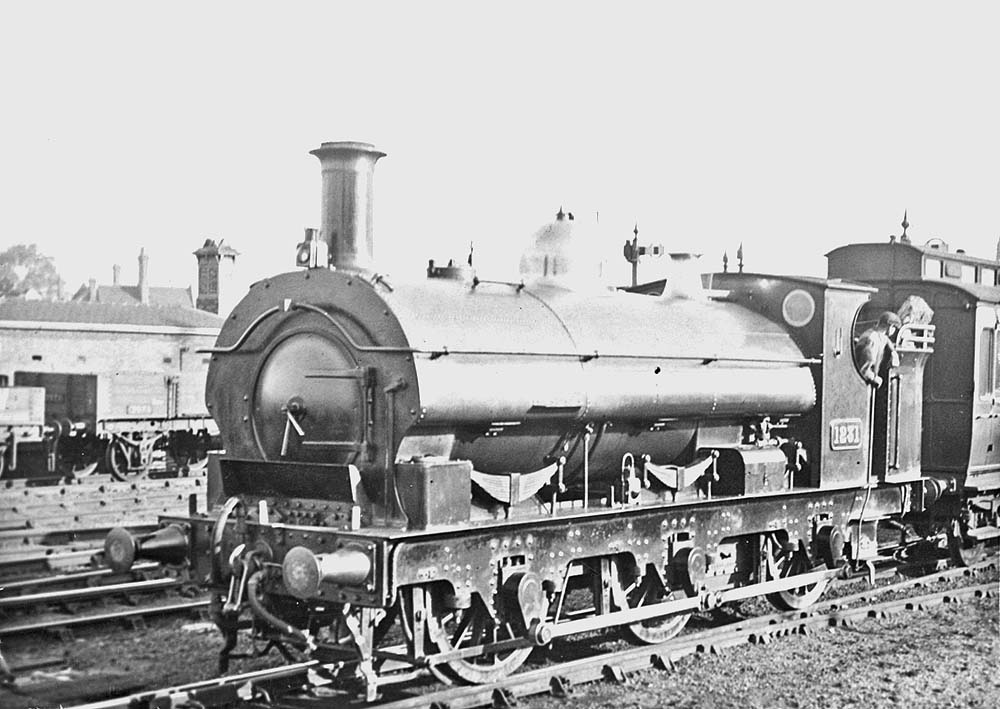|
|
 |
 |
|
GWR Route: Banbury to Wolverhampton
Leamington Spa - GWR Locomotives: gwrls2062
 |
GWR Class 1076 0-6-0ST No 1231 is seen marshalling coaching
stock in Leamington station's up bay platform. Built by Swindon works in 1876,
No 1231 was rebuilt with pannier tanks in 1928 but only remained in service for
a short while being withdrawn in 1930. There were a total of two hundred and
sixty-six locomotives in the 1076 Class built by the GWR between 1870 and 1881.
They are often referred to as the Buffalo Class following the naming of
locomotive GWR No 1134. These large tank locomotives, with their 4 feet 7 inch
wheels and 17 inch × 24 inch cylinders were capable of working trains on
the main line. They were a development of George Armstrong's 1016 Class built
from 1867 which were themselves derived from the earlier 302 Class of Joseph
Armstrong. The 1076 Class were perpetuated by George Armstrong's successor,
William Dean, until 1881. William Dean then produced a modernised saddle tank
locomotives of similar size, the 1813 Class. The first six of the 1076 Class
were built with side tanks. whilst following locomotives were built with saddle
tanks covering their boilers and fireboxes. From 1874 a longer saddle tank
extending to the front of the smokebox became the norm.
All the earlier locomotives were eventually fitted with these
larger tanks. Most of the class were reconstructed with pannier tanks from 1911
onwards. The first locomotives had just a spectacle plate to give protection
for the crew, but then small cabs, open at the back, were fitted. Later on most
of the surviving locomotives were given full cabs so that there was protection
when running in reverse. Other changes to various locomotives over their long
lives were Belpaire fireboxes, enlarged coal bunkers, and even superheaters.
One or two were fitted with spark-arresting chimneys. Twenty-one locomotives
were fitted for working autotrains. Ten locomotives were built in 1876 with
broad gauge wheels outside the standard double frames. Five more broad gauge
locomotives were built in 1878, while from 1884 another thirty-five were
converted from standard gauge to broad gauge but eventually all were converted
back to standard gauge. GWR No 1256 was one of a pair of locomotives that
worked the last broad gauge train from Penzance back to Swindon for conversion
on 20 May 1892. The last one was withdrawn in 1946.
 back back

|
|
|
